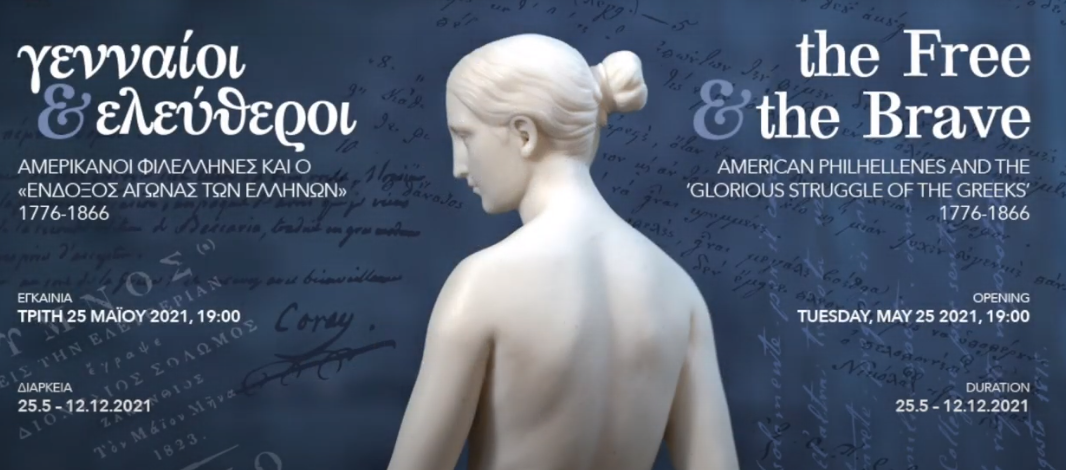
To mark the 200th anniversary of the Greek Revolution, a theme dominant among the significant collections of the Gennadius Library, the American School of Classical Studies at Athens organized an exhibition on American Philhellenism. Part of an important American institution that has distinguished itself in the study of Greece since 1881, the Gennadius Library focuses on the history of Greece, sο the bicentenary is a unique opportunity to explore the relations and connections between Greece and the United States during the century of revolutions. The exhibition, which will also be available online, is based on rare archival material from the Gennadeion, as well as paintings and relics of museums and private collections in Greece.
The ancient Greek ideals of freedom and democracy created strong bonds between America and the Greek revolutionaries, which are also reflected in the Hymn to Liberty—the national anthem of Greece—of Dionysios Solomos.
Heartily with joy salutes thee
That free land of Washington,
Mindful of the bonds that fettered
Her own limbs, not long gone.
(transl. Florence McPherson, 1884) 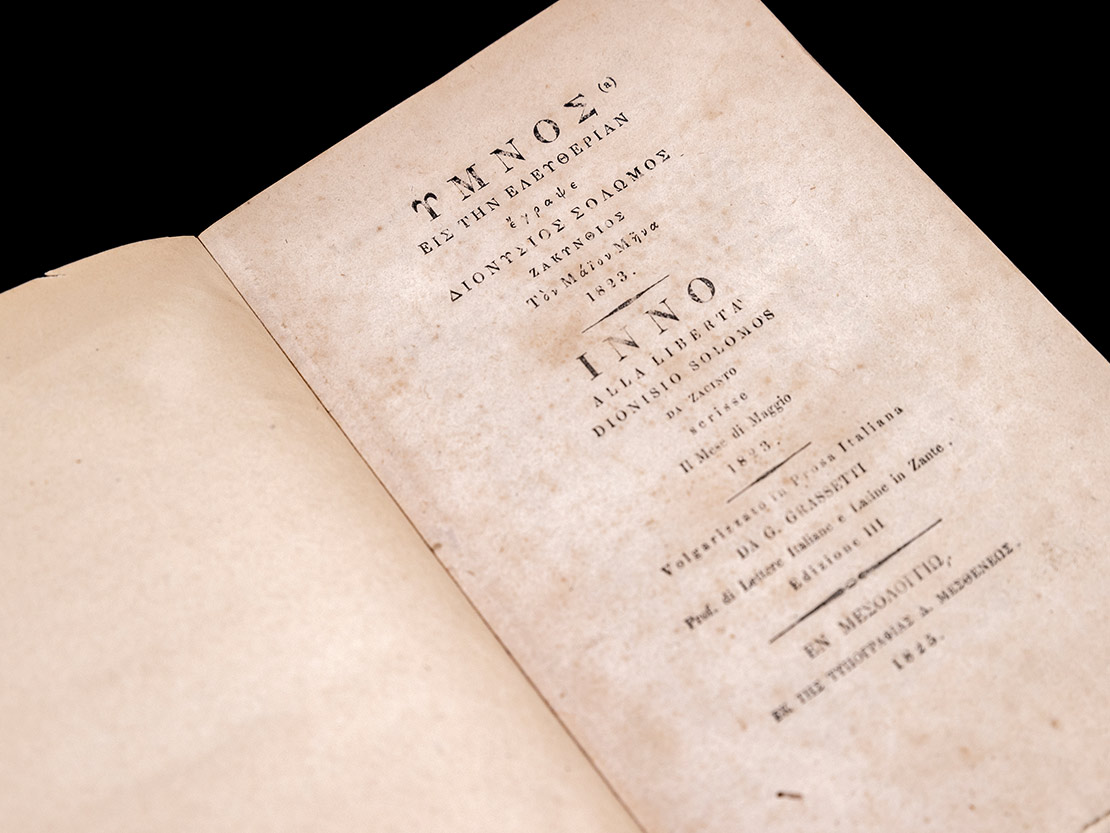
Above and below: The Hymn to Liberty by Dionysios Solomos, printed in Messolonghi in 1823. Stanza 22. 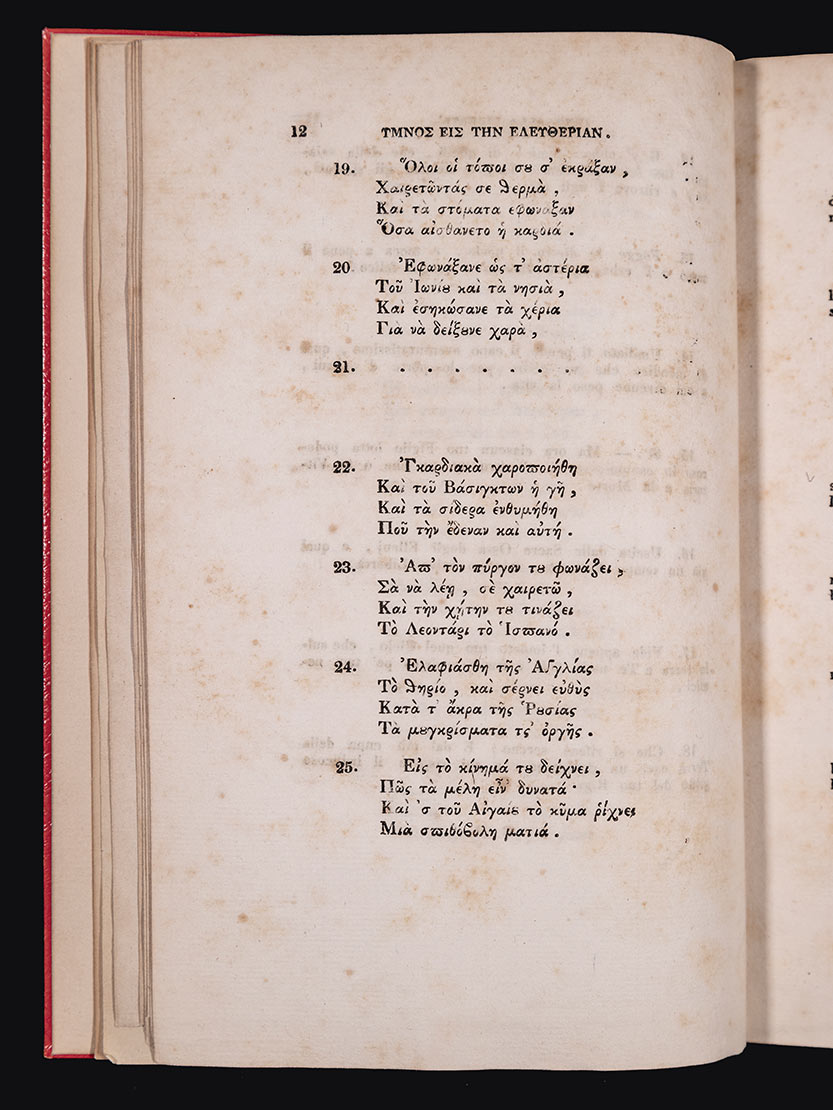
The Gennadius Library contains rare publications, pamphlets, memoirs, newspapers, archival material, engravings, travelogues, maps, poems, and textbooks that are well-known resources for the history of the Greek Revolution and Philhellenism. It also showcases for the first time many gifts of Philhellenic material donated to the Library by Professor Curtis Runnels. The exhibition is also enriched with loans from: the Collection of Michael and Dimitra Varkarakis, the Archives of the Hill Memorial School, the Archives of the British School at Athens, the National Historical Museum, the Museum of History of the University of Athens, the Diplomatic and Historical Archives of the Ministry of Foreign Affairs, Mr. Konstantinos Arniakos and Mr. Robert McCabe.
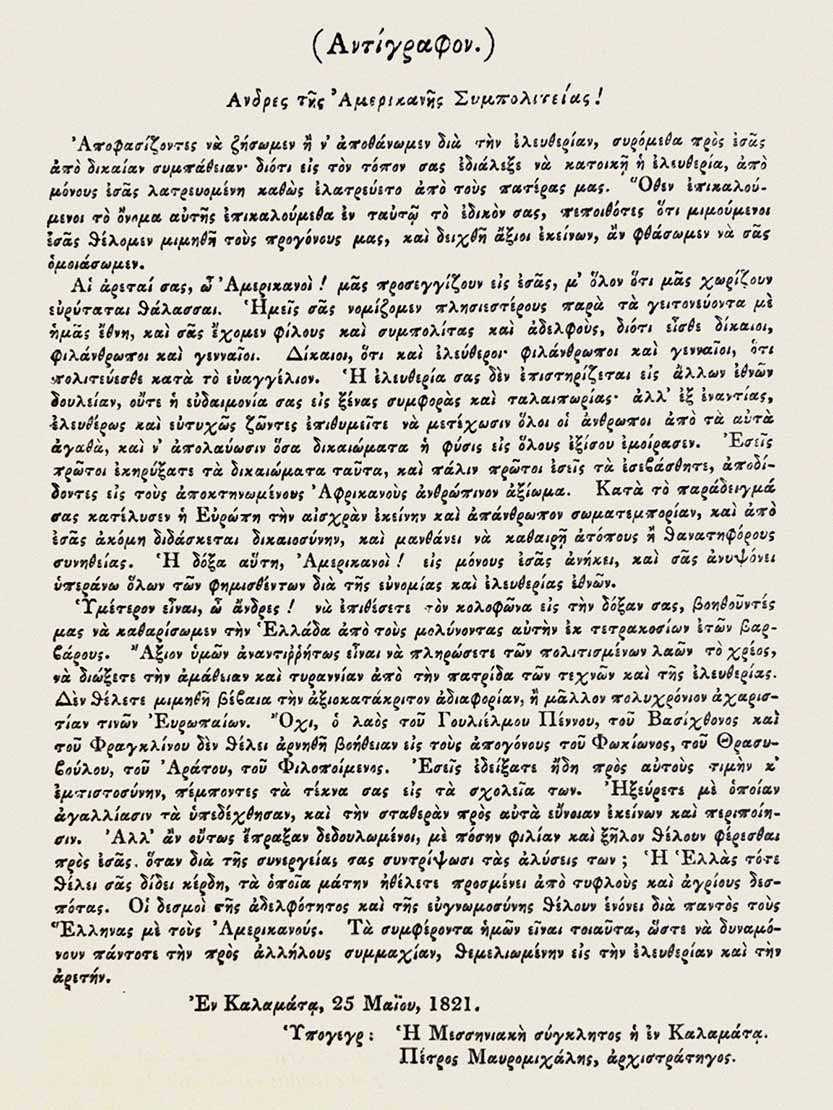
Appeal of the Messenian Senate to the American people (March 25, 1821). Published in The North American Review (October 1823
Moved by the Greek uprising against Ottoman rule, the American philhellenes sparked public sentiment and sympathy for Greece, raised money and supplies to help the struggle and pressured their political representatives to recognize Greek independence. Focusing on the action of individual actors, educators, orators, politicians, and fighters, the exhibition highlights the multi-layered American support for the cause of the Greeks and the impact that the movement of Philhellenism had on the development of the new Greek state. 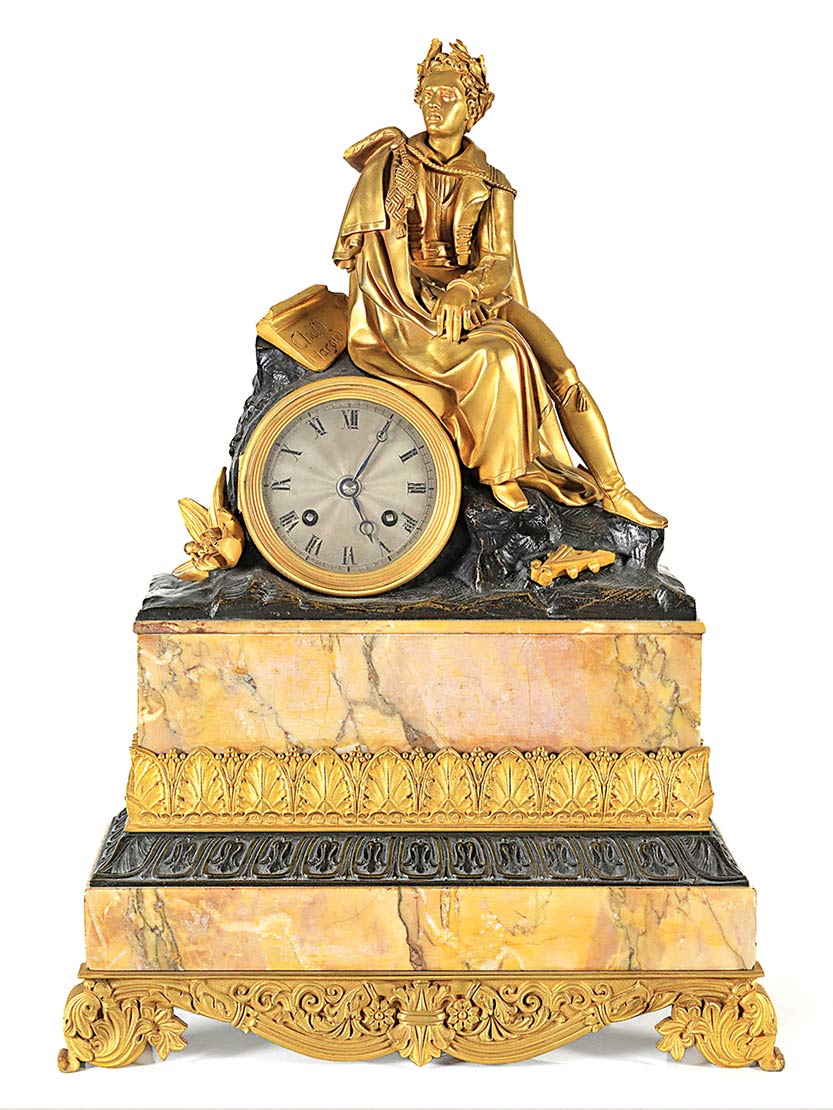
Table clock of gilded bronze (ormolu) and alabaster base 48x33x12cm. The sculptural decoration represents Lord Byron crowned with laurel and holding a pen. On the broken panel next to him, the inscription “Childe Harold.” The Michael and Demetra Varkarakis Collection.
Founded in 1922 to house the library of the Greek ambassador Joannes Gennadius, the Gennadius Library holds unique treasures on the Greek War of Independence and Philhellenism including memorabilia of the consummate philhellene, Lord Byron. His poetry and the atrocities committed by the Ottomans against the Greeks, communicated swiftly to America in the press, motivated American Philhellenes to join the revolutionaries, to collect money and supplies for humanitarian aid to Greece, and even to adopt orphaned Greek children. The Enlightenment had prepared the ground: as the birthplace of western civilization embracing Christianity, Greece deserved to be resurrected as a free and democratic state. Once freed, Greece built its educational infrastructure with the succor of American missionaries who set up successful schools on Greek soil. Finally, the plight of Greek slaves fueled abolitionist discourse in the US, as the story of Hiram Powers’s sculpture The Greek Slave amply demonstrates. To capture the complex range of interactions between the two countries, the exhibition extends from the American Revolution of 1776 to the Cretan revolt of 1866. 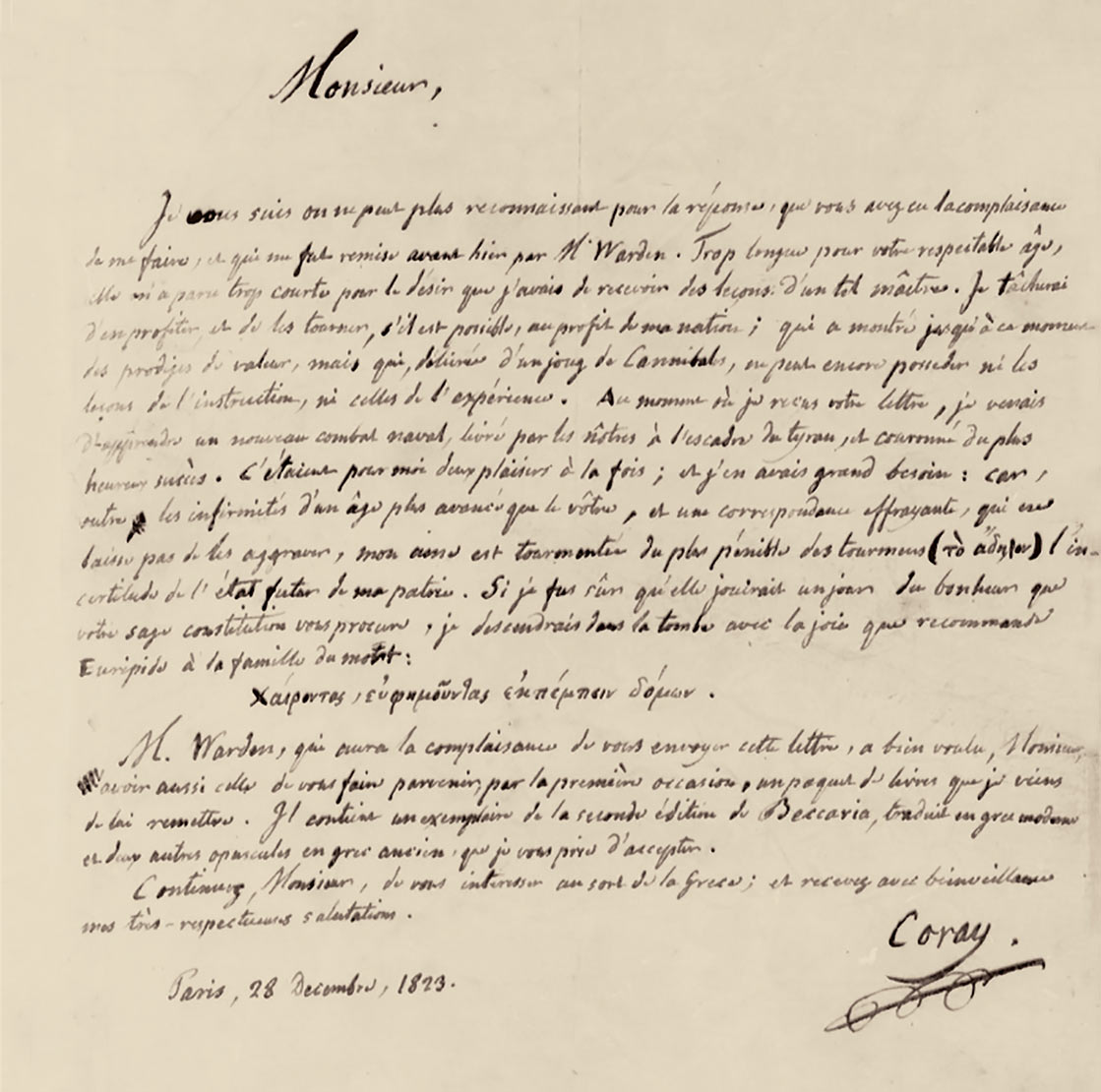
Letter from Adamantios Korais addressed to Thomas Jefferson, 1823. Library of Congress, Washington.
Greek intellectual Adamantios Korais exchanged views on the Greek Revolution and the Constitution with the founding father of the American Nation, Thomas Jefferson. In May 1821, Petrobeis Mavromihalis appealed on behalf of the Greek revolutionaries for recognition and support from America to the young Professor Edward Everett, the first holder of the Eliot Professorship of Greek Literature at Harvard. The New Yorker George Jarvis became a lieutenant general in the Greek forces, known as “Captain Zervos,” while the young doctor Samuel Gridley Howe came to Greece after graduating from Harvard in 1824and served as chief surgeon of the Greek army. Committees of American Philellenes in New York, Philadelphia and Boston sent significant humanitarian aid to Greece and rescued orphaned Greek children in the USA. 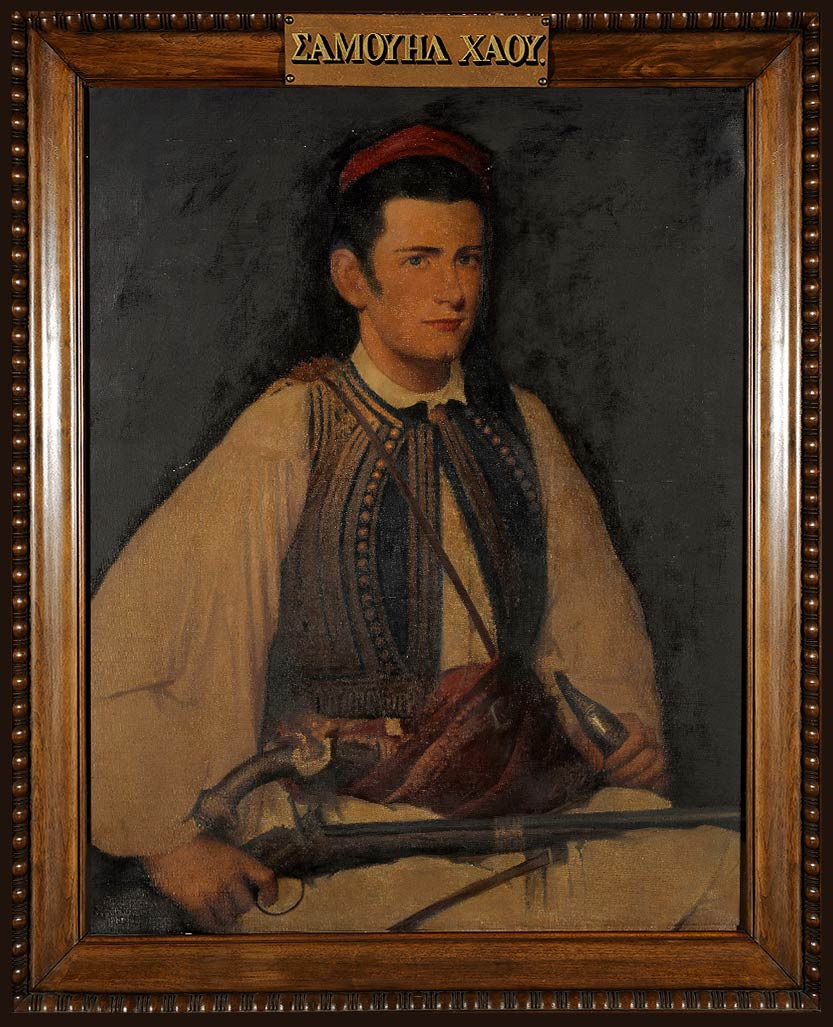
Portrait of Samuel Grindley Howe by John Elliot. National Historical Museum
The educational activities of Protestant missionaries in Greece provided Greek schools with precious textbooks translated from the English, while the successful school founded by reverend John J. Hill and his wife Frances in Athens continues to operate to this day (Hill Memorial School). 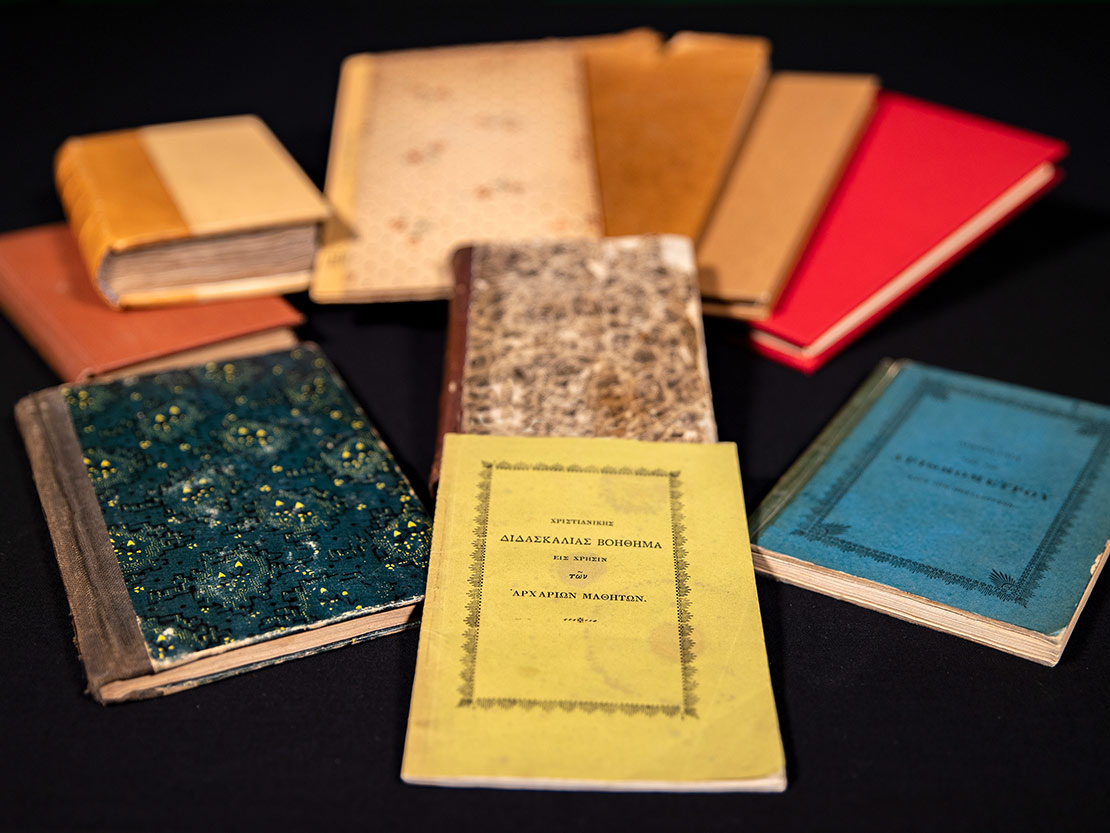
School textbooks printed in Malta and Syros by the Philhellenic Printing House of America, 1830s
The exhibition also explores the role played by the slave trade, as experienced by the American Philhellenes in the slave markets of the East, on the discourse about the emancipation of slaves in the United States. The slave markets of Constantinople and especially the ordeals suffered by Greek women in bondage, were captured with great artistry by the American sculptor Hiram Power in a famous marble sculpture, The Greek Slave. The important aesthetic impact of this statue on the American public fueled heated discussions about slavery in ante-bellum America. 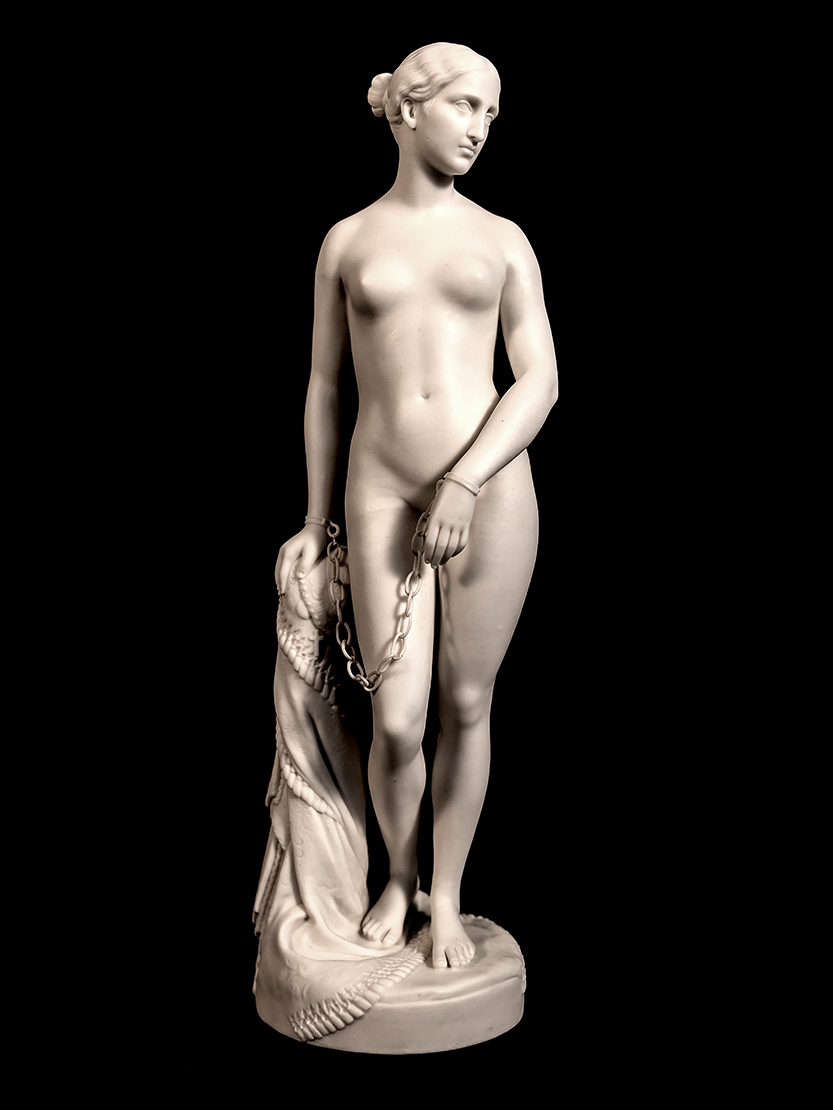
The Greek Slave, Parian porcelain by Minton, replica of the famous statue by the American sculptor Hiram Powers (1848). Height 35.5 cm.
The exhibition is sponsored by the U.S. Embassy in Greece, as part of its programs to celebrate the 200th anniversary of the Greek Revolution entitled “USA & Greece: Celebrating 200 Years of Friendship”, Overseers of the Gennadius Library and other supporters of the Library’s work.
An exhibition in the Ioannis Makriyannis Wing of the Gennadius Library
The American School of Classical Studies at Athens
Curated by Dr. Maria Georgopoulou
May 25, 2021, to December 12, 2021
Opening hours: Thursday-Sunday: 12.00-18.00
Free Admission
Latest News
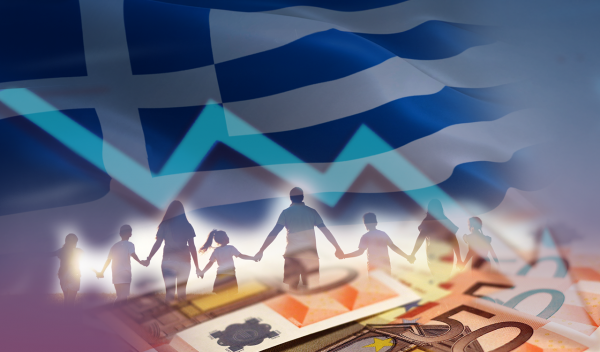
Cost of Living: Why Greece’s 3% Inflation Is Raising Alarm
Greece appears to be in a more difficult position when it comes to price hikes, just as we enter the era of Trump’s tariffs.
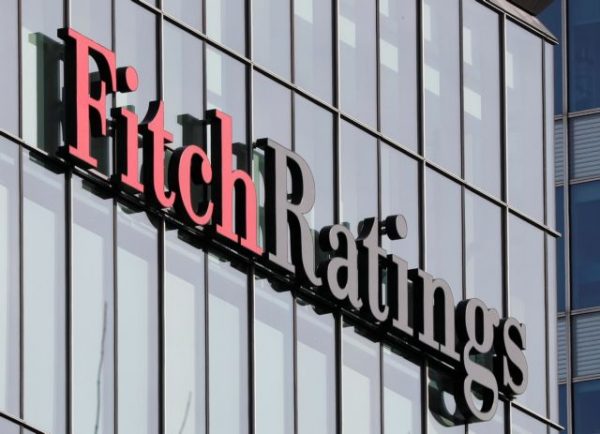
Fitch Ratings Upgrades the Four Greek Systemic Banks
NBG’s upgrade reflects the bank’s ongoing improvements in its credit profile, Fitch notes in its report, including strong profitability, a reduction in non-performing exposures (NPEs), and lower credit losses

Trump to Announce Sweeping New Tariffs Wednesday, Global Retaliation Expected
With Trump's announcement just hours away, markets, businesses, and foreign governments are bracing for the fallout of one of the most aggressive shifts in U.S. trade policy in decades.

Inflation in Greece at 3.1% in March, Eurostat Reports
Average inflation in the eurozone settled at 2.2%, compared to 2.3% in February
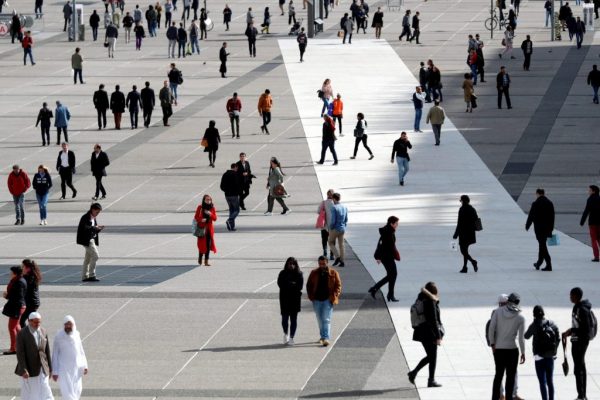
Greece’s Unemployment Rate Drops to 8.6% in February
Despite the overall decline, unemployment remains higher among women and young people.
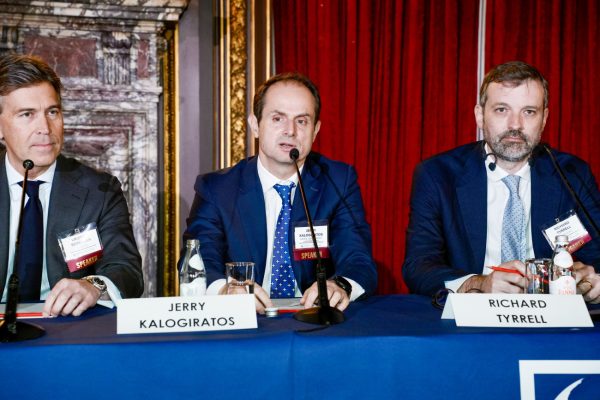
Jerry Kalogiratos Highlights Key Role of Energy Transition and Data Demand in LNG Outlook
Energy transition and the prospects of LNG were discussed at Capital Link’s 19th Annual International Maritime Forum, during a panel discussion with Jerry Kalogiratos (Capital Clean Energy Carriers Corp.)
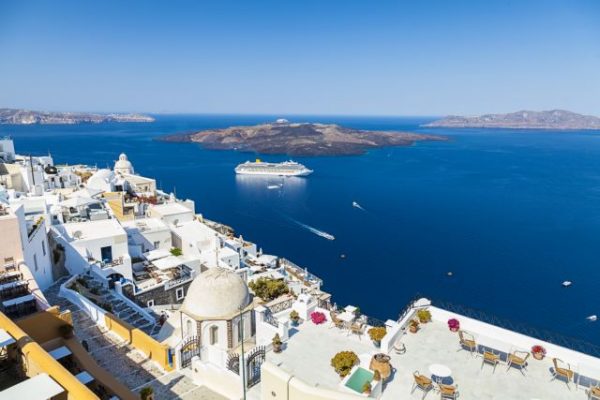
Santorini Safe and Ready for a Dynamic Tourism Season
Authenticity, cultural heritage, and genuine experiences at the center of Santorini's new promotional campaign

Electricity Bills: Greece Announces Reduced Tariffs Schedule
Greece will now offer lower electricity rates between 11:00-15:00 and 02:00-04:00

Chevron Confirms Eyeing Natural Gas Exploration South of Crete
Chevron recently declared its intent to explore a third area, south of the Peloponnese.
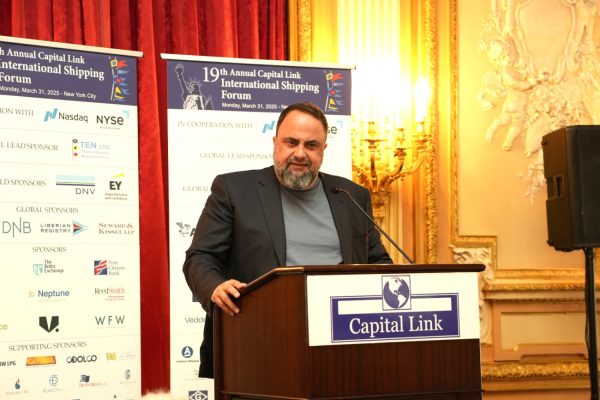
Evangelos Marinakis: A time of change from which shipping can benefit
Speaking at the 19th Annual Capital Link International Shipping Forum Evangelos Marinakis stressed the challenges that shipping faces today












![Τουρκία: Μεγάλες βλέψεις για παραγωγή ηλεκτρικών οχημάτων [γράφημα]](https://www.ot.gr/wp-content/uploads/2025/03/ot_turkish_autos-90x90.png)











![ΕΛΣΤΑΤ: Αυξήθηκε η οικοδομική δραστηριότητα κατά 15,6% το Δεκέμβριο [πίνακες]](https://www.ot.gr/wp-content/uploads/2025/03/DSC9655-2-1024x569-1-90x90.jpg)



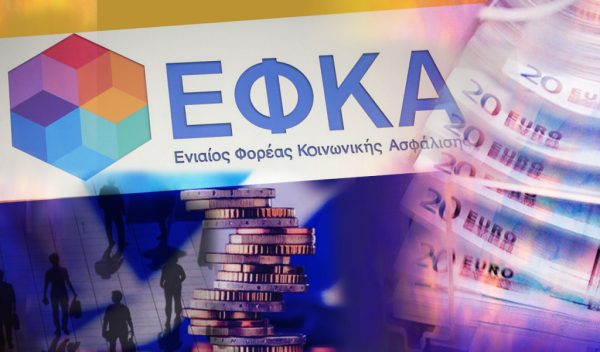
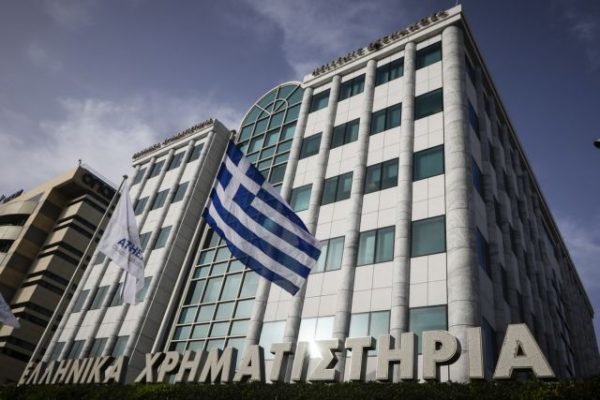

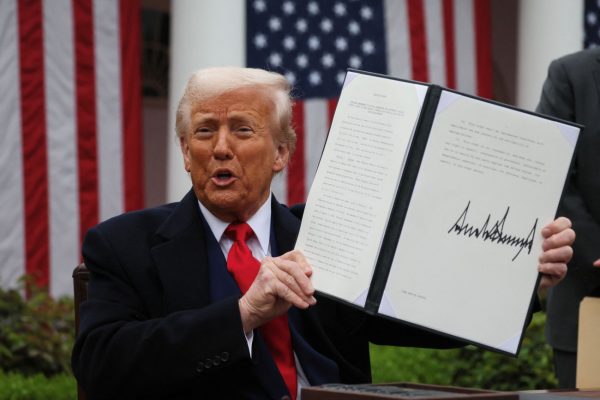
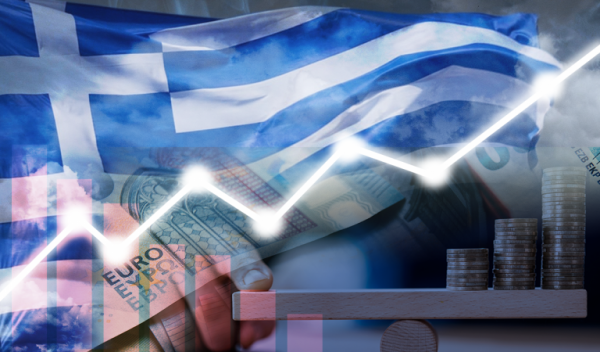




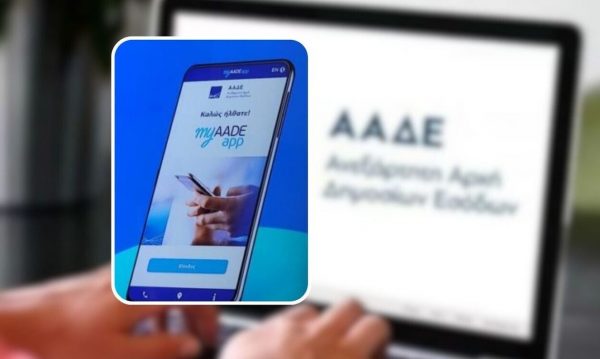
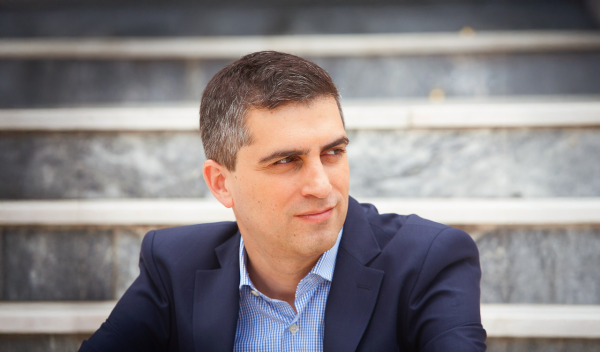
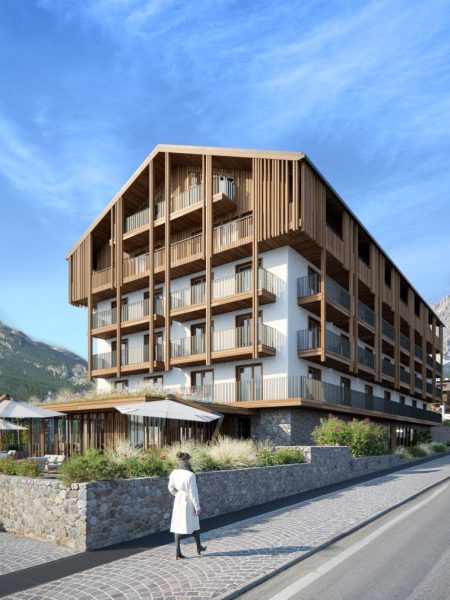
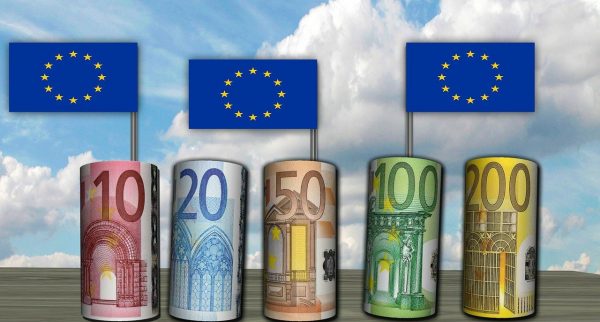
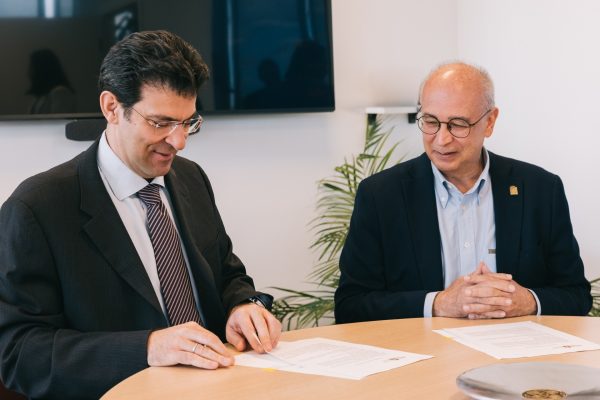
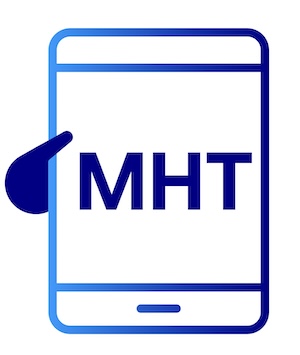 Αριθμός Πιστοποίησης
Αριθμός Πιστοποίησης